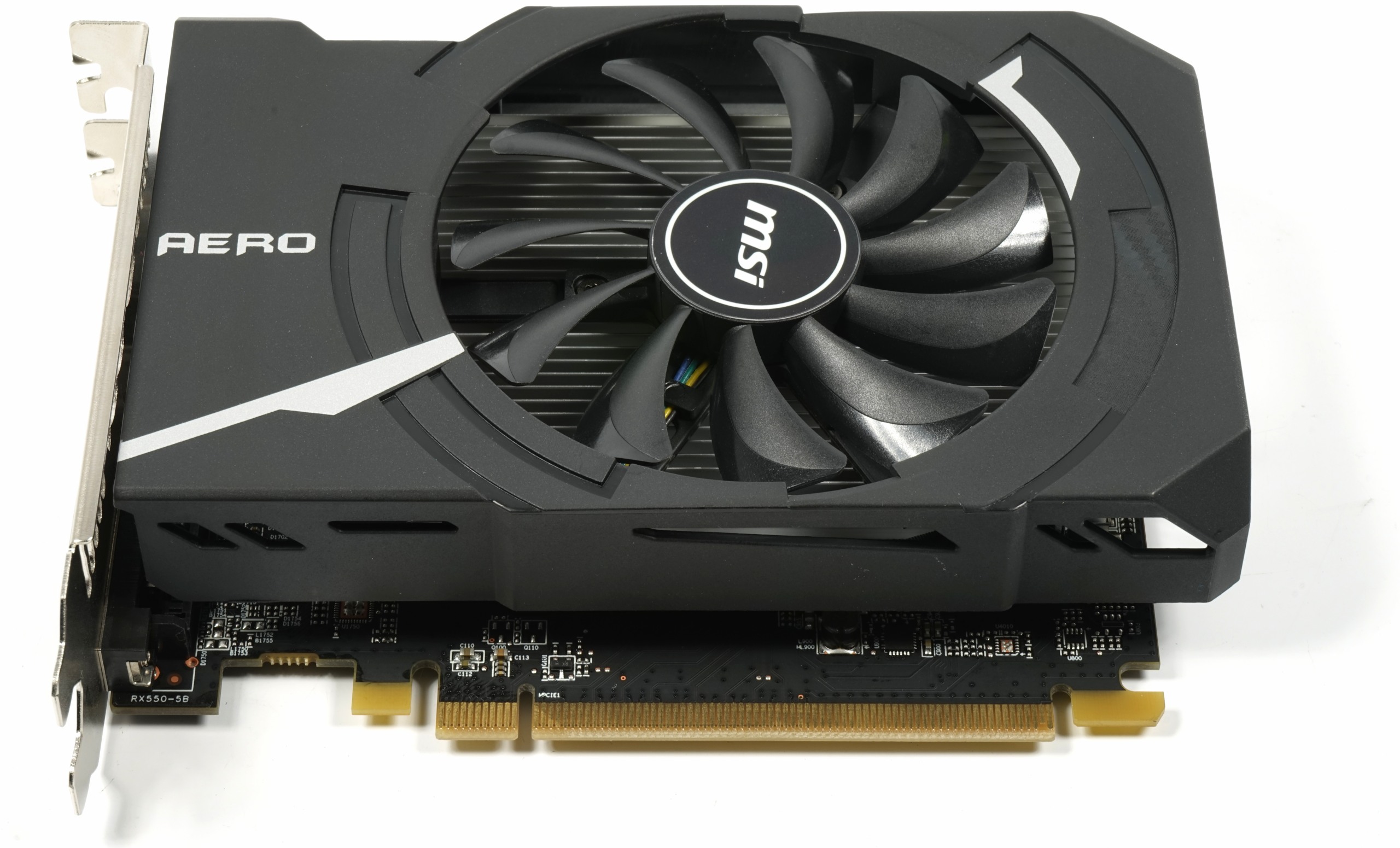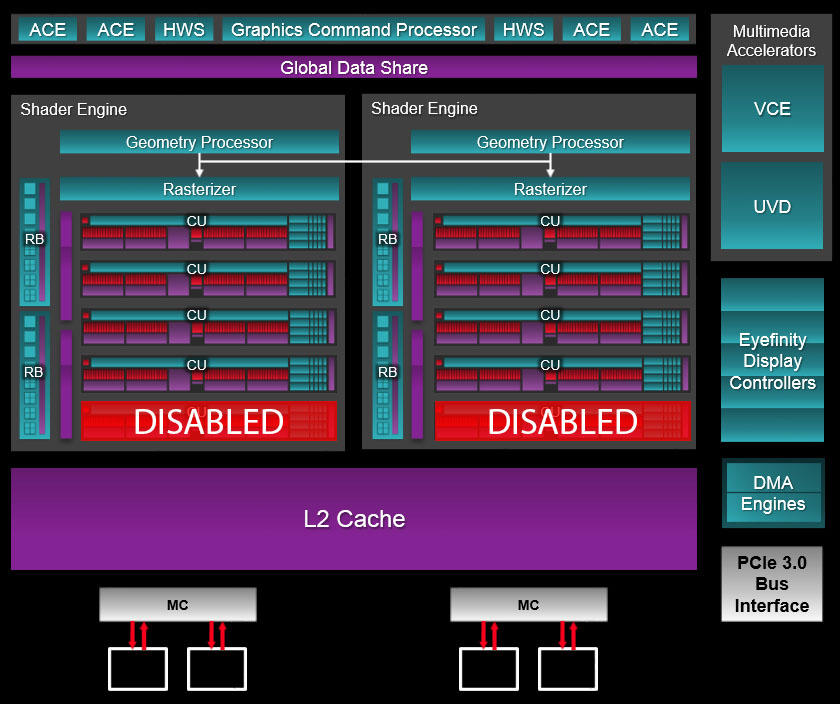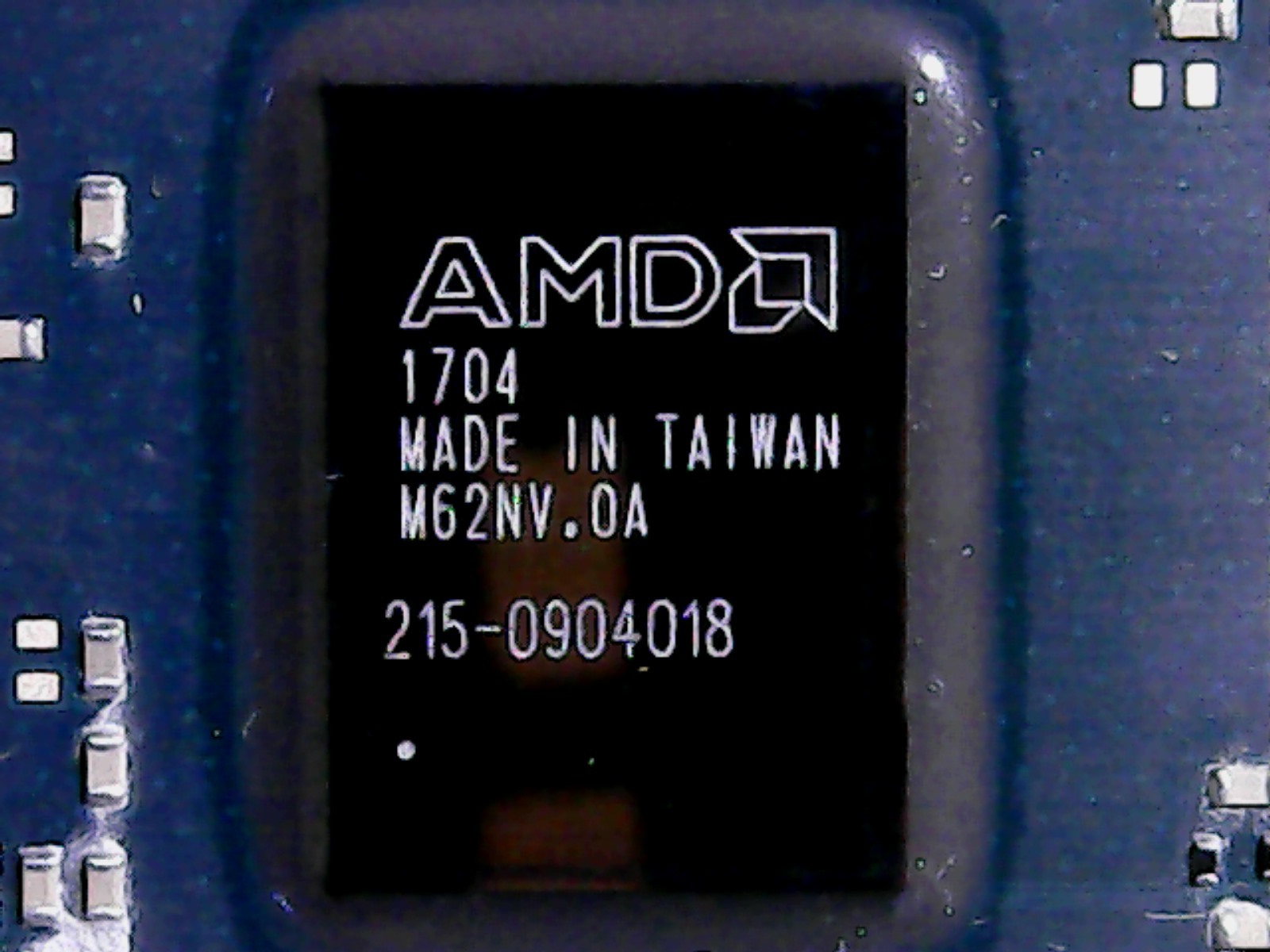Early Verdict
If you're coming from Intel's HD Graphics 530, any discrete graphics card is going to be exciting. Indeed, Radeon RX 550 looks like a great upgrade for folks limping along with CPU-based graphics. But AMD's own Radeon RX 460 2GB is quite a bit quicker than the RX 550 in demanding games, and it only costs about $10 more. If you can live with the 460's slight price premium and higher power consumption, that's the card we'd buy for $90.
Pros
- +
Low power, low heat
- +
Compact form factor
- +
Serviceable 1080p performance
- +
No auxiliary power connector
Cons
- -
Notably slower than slightly more expensive Radeon RX 460
Why you can trust Tom's Hardware
AMD Radeon RX 550 2GB
Radeon RX 550 is AMD’s first graphics card based on new silicon since its Polaris 11-based Radeon RX 460. The company says RX 550 is 1080p-capable in a number of popular e-sports games, adding that the product’s compact dimensions and low power also endear it to home-theater PCs.
Fittingly, the RX 550 slides in behind AMD’s just-announced Radeon RX 560 and starts at $80. That’s an incredibly important price point. In fact, as recently as last year, our Best Graphics recommendations included the $90 Radeon R7 360. Its disappearance forced us up the stack to Radeon RX 460, which started life at $110 last August.
Can Radeon RX 550 carve out a spot on the list of Tom’s Hardware-approved upgrades by serving up viable performance for less money than some of our past picks?
Meet Polaris 12
AMD’s older Radeon RX 460 wields 896 Stream processors. The just-announced Radeon RX 560 bumps that to 1024 Stream processors operating at even higher clock rates. When it arrives next month, we expect the RX 560 to be even faster than its predecessor for right around $100.
This leaves room for a lower-end part like the Radeon RX 550. AMD certainly could have built it using Polaris 11 with more disabled compute units. But the company’s mobile aspirations apparently necessitated a smaller GPU with fewer transistors and a more conservative power profile.
Polaris 12, code-named Lexa and based on a fourth-gen GCN architecture, is that processor. Composed of 2.2 billion transistors and measuring 101 square millimeters, it’s frankly not much smaller than Polaris 11. However, AMD plans to use it in configurations that wouldn’t have made sense from a larger chip.
In its entirety, Polaris 12 exposes 10 Compute Units organized into two Shader Engines capable of two triangles/clock, similar to Polaris 11 but with fewer CUs per Shader Engine. Radeon RX 550, specifically, uses an implementation with eight of those 10 Compute Units enabled, adding up to 512 Stream processors and 32 texture units.
Get Tom's Hardware's best news and in-depth reviews, straight to your inbox.
The chip’s back-end is proportioned more generously, maintaining Polaris 11’s 16 ROPs, aggregate 128-bit memory bus, and 7 Gb/s GDDR5 able to move up to 112 GB/s. Whereas Polaris 11 comes with 1MB of L2 cache, however, Polaris 12 is down to 512KB.
| Header Cell - Column 0 | Radeon RX 550 | Radeon R7 260X | Radeon RX 460 |
|---|---|---|---|
| Shader Units | 512 | 896 | 896 |
| ROPs | 16 | 16 | 16 |
| GPU | Polaris 12 | Bonaire | Polaris 11 |
| Transistors | 2.2 Billion | 2.08 Billion | 3 Billion |
| Memory Size | 2GB | 2GB | 2/4GB |
| Interface | 128-bit | 128-bit | 128-bit |
| GPU Clock Rate (MHz) | 1100+ | 1100 | 1090 |
| Memory Clock Rate (MHz) | 1750 | 1625 | 1750 |
AMD’s official specification for Radeon RX 550 calls for a 1100 MHz base clock rate and 1183 MHz boost frequency, though some partners will undoubtedly configure their boards differently. A 50W ceiling exempts the RX 550 from needing an auxiliary power connector, and even at overclocked frequencies you shouldn’t have any issue staying under the motherboard slot’s specified current limit.
We are told that AMD has no plans to put any other configuration of Polaris 12 on a desktop graphics card, allowing the company to pursue mobile market share with other variants of this GPU.
Particularly relevant to Polaris 12 are some of the media and connectivity features specific to AMD's fourth-gen GCN GPUs. For more information on the architecture's display control and fixed-function accelerators, check out this page of our Radeon RX 480 8GB review.
The die markings made us do a double-take. "Made in Taiwan" doesn't indicate that Polaris 12 came from GlobalFoundries, after all. Further, the codes and font also seemed familiar from Nvidia's various processors. But it turns out that this is due to the packaging step, where the die is installed onto the GPU package. A company called ASE, which is one of the world's largest IC assemblers, handles the process, and it has offices in Taiwan. Mystery solved.
MORE: Best Graphics Cards
MORE: Desktop GPU Performance Hierarchy Table
MORE: All Graphics Content

Igor Wallossek wrote a wide variety of hardware articles for Tom's Hardware, with a strong focus on technical analysis and in-depth reviews. His contributions have spanned a broad spectrum of PC components, including GPUs, CPUs, workstations, and PC builds. His insightful articles provide readers with detailed knowledge to make informed decisions in the ever-evolving tech landscape
-
dstarr3 Wow, can't even hit 60fps in Doom. Talk about a sheep in wolf's clothing. This is barely a step above those $30 GPUs that you buy strictly because you don't have onboard graphics.Reply -
TechyInAZ Reply19617624 said:Wow, can't even hit 60fps in Doom. Talk about a sheep in wolf's clothing. This is barely a step above those $30 GPUs that you buy strictly because you don't have onboard graphics.
This is an 85$ GPU, competing with more the likes of a GT 740. So don't expect good details at such a low price point. $30 GPUs are worse than IGPUs BTW.
However, you can still find GTX 750s and 750 tis used for the price of a 550 and it performs much better. -
LucoTF I think if it comes down $10-$20 it will be a contender, it does solidly outperform AMD APUs and hopefully will help to keep our more budget orientated gamers away from the A8s and A10s...Reply -
MCMunroe I don't understand why these are all full height double width cards. Wouldn't the only purpose be to install in a small form factor case?Reply -
TallestJon96 They should be selling the old 460 as the 550, for $80, and then sold this gpu as the 540 for $50-$60.Reply
Its hard to buy a card that you know can't keep up with the consoles. What happens when a big game comes out and you don't have the horse power to actually play it? The 460 and 560 can keep up, but the 550 might he left behind.
Save your pennies for another couple weeks and buy something better, its worth the wait -
Glock24 Very dissapointing for the price. At $50 might make more sense. Then again, I would only use this for a system without IGP for video acceleration.Reply
On a side note, images finally load correctly using Firefox on Android. -
Joe Black Face it... Its a 720p card. Just like something like the a10-7890K using integrated graphics is good for 720p gaming too.Reply
That's the value proposition that should be explored. the A10 w. integrated, or the 550 discreet. -
InvalidError Reply
There is a very simple reason nobody makes new GPUs for under $80: there is next to no profit to be made from them.19617777 said:They should be selling the old 460 as the 550, for $80, and then sold this gpu as the 540 for $50-$60.
Keep in mind that out of that $80 MSRP, there is a ~60% distributor and retailer markup on the manufacturer's own price, so the manufacturer itself only sees ~$50 of it to cover DRAM, GPU chip, PCB, support components, HSF, assembly, testing, packaging, R&D, marketing, gross profit margin, etc. In other words, manufacturers barely break even on those and don't want you to buy them unless your choice boils down to either that or nothing. They'd much prefer that you buy the RX560 for $20-30 more which translates to $10-20 more gross profit for the manufacturer.
Who are you going to get an alternative sub-$100 GPU from? Nvidia has bailed out of that market altogether to focus on $150+ (launch-time MSRP) GPUs. -
ohim The card is for E-Sports gaming and instead of starting with CS/DOTA etc you start with Doom and BF1.. games for which the card is not intended :)Reply


